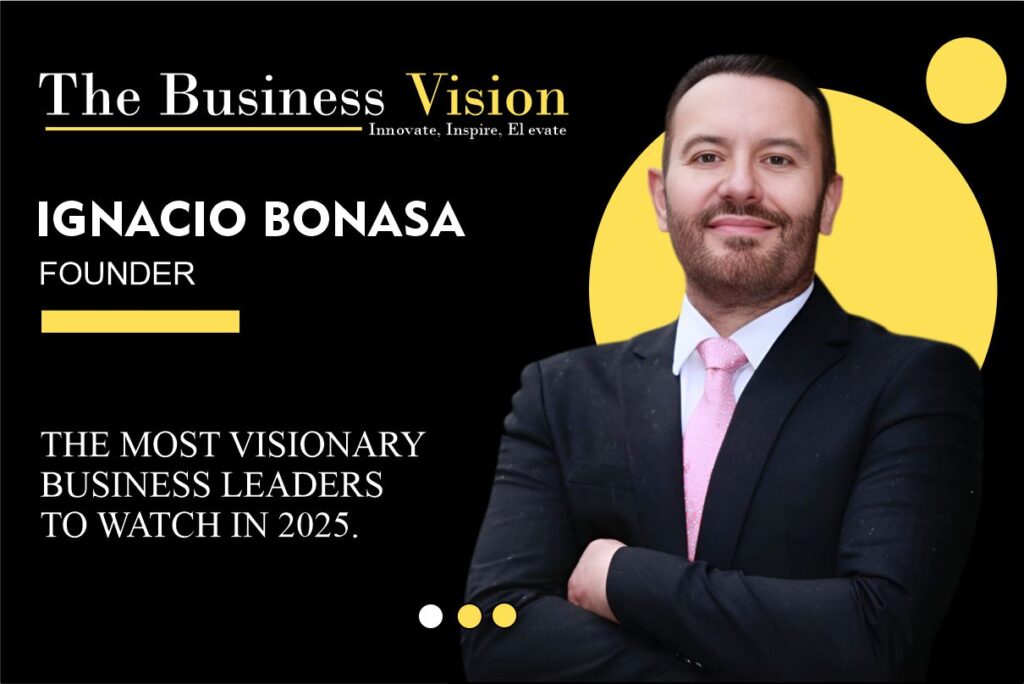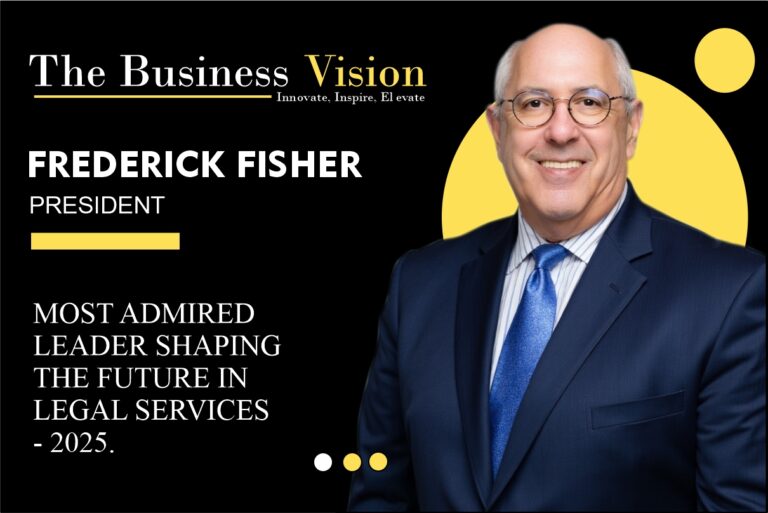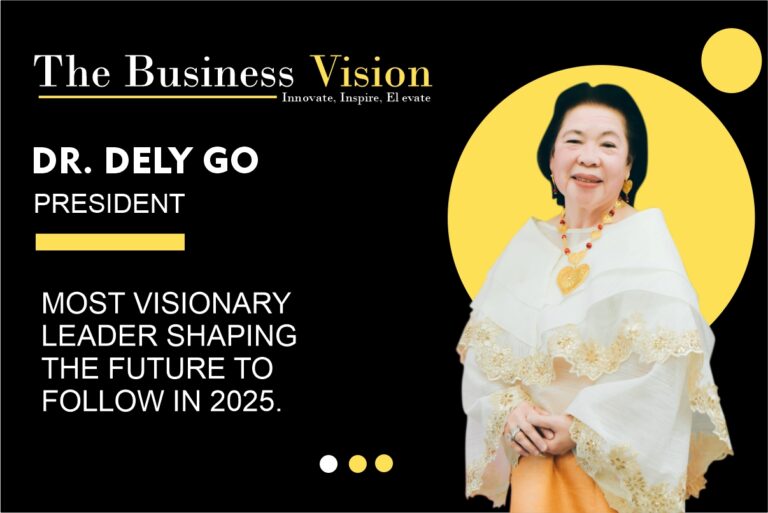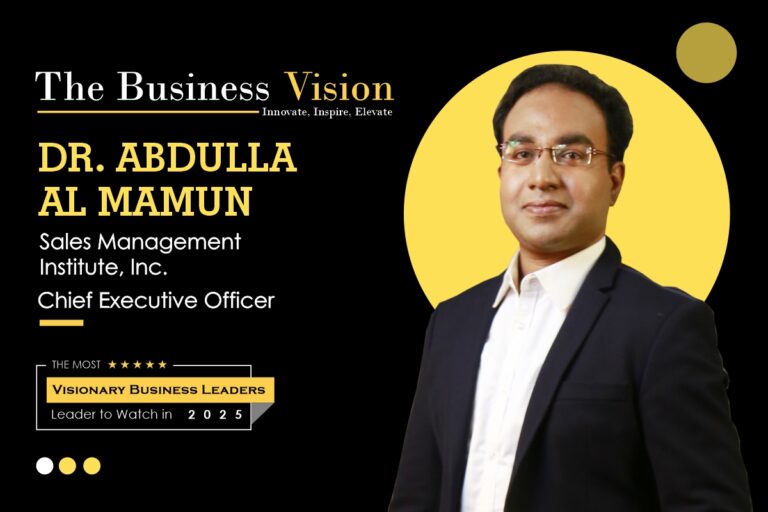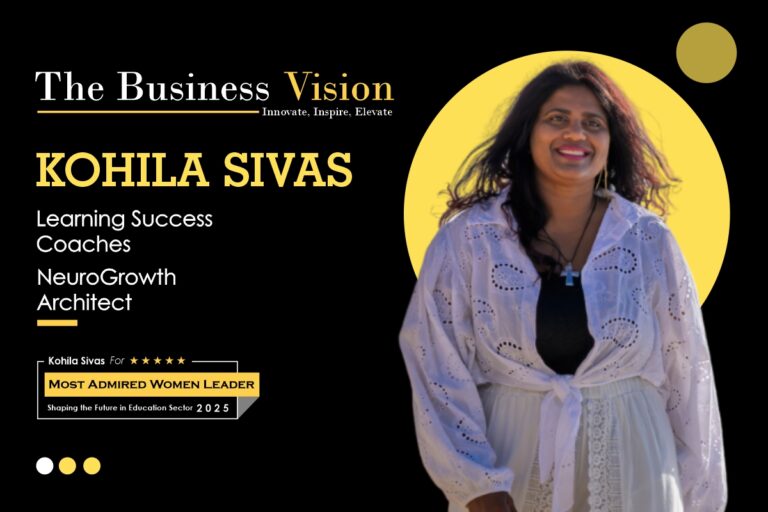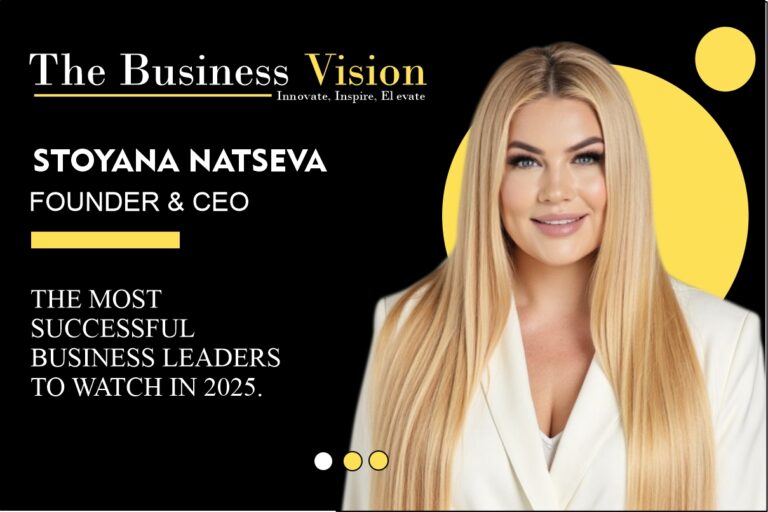With AI taking over and KPIs tracking productivity, the soul is conspicuously absent from work and 83% of employees report feeling emotionally disengaged (Gallup, 2024). Ignatius Bonasa strikes us as that rare type of person who feels as though a purpose driven life can be created by embracing the unorthodox.
To embrace his lived philosophy, Bonasa left banking to “lead” Liderarte, a “talent factory” that educates executives using opera, Broadway musicals, sculpture, and jazz as his aids. Bonasa’s unconventional approach turns out to be highly effective:
- Participants of art-based training reported improved resilience by 72%.
- Companies that make use of the ArtESPACIO method also experience a staggering 40% reduction in workplace stress.
His Turn the Table movement which reimagines talent development for Fortune 500 companies has been adopted across 11 countries. In reshaping traditional frameworks, unorthodox methods bore measurable results. This timeless tale demonstrates how crises can lead to revolutions, and Bindable explores the boundless possibilities that lie beyond work.
The Burnout That Sparked a Revolution
Madrid, 2012: A luxury office in the capital of Spain’s poker-playing negotiations bore witness to the fall of Ignacio Bonasa into a deep burnout. Diagnosed with severe burnout, he was a corporate success’s paradox—outwardly thriving, inwardly hollow. “I was a ‘successful zombie.’” His healing did begin in board rooms but only after he sought solace in Madrid’s Prado Museum, where Goya’s Black Paintings served as a window to his soul.
Bonasa received the shocking revelation of heeding toward art therapy—untapped potential within silently transforming business paradigms. Today, this realization fuels Bonasa’s Lifework of Art which he aptly named Liderarte. A journey sparked by spreadsheets led to claiming the title “soul architect” only to reveal through burning their shackles, craft rather than control births impact. His work—a dizzying synthesis of framing vulnerability at the heart of strategy, turning studios into boardrooms—breaks conventional business wisdom with the haunting claim: “The truest metamorphosis occurs when we cease to manage heads and nurse hearts to awaken.”
Art as Strategy: The Unlikely Leadership Hack
Ignacio Bonasa’s Art-Based Learning method fosters breakthroughs in corporate leadership development by transforming companies into creative laboratories. Mastering crisis management comes from studying Picasso’s Guernica while jazz teaches teams to ‘listen like bassists and lead like drummers.’ Financial strategies result from mosaic principles where every fragment (data point) matters, and vision is the cohesive glue.
Skeptics bear the burden of silence when weighed with results. Siemens Spain logged a staggering 27% faster conflict resolution post theater-based training. “Art accesses emotional intelligence that traditional methods miss,” Bonasa explains. Painting their “leadership portraits” enables managers to bare truths that no performance review could evoke.
With programs now embedded in IESE and ESADE, Bonasa further supports the notion that art and analytics aren’t opposites. In his world, Rembrandt teaches resilience, Mozart models adaptability, and the blank canvas transforms into the most powerful business strategy tool.
Liderarte: Where Canvases Replace PowerPoints
Walk into the Madrid headquarters of Liderarte, and you know at once that this is no typical corporate training facility. The clinical conference tables and bullet-pointed slides are gone, replaced by a dynamic creative environment intended to provoke leadership through experience, not rhetoric. Pottery wheels await “strategic sculpting” sessions, and 100 instruments fill a special symphony room awaiting executive orchestras. The walls are communal canvases, featuring changing murals created by members of international Fortune 500 corporations.
“This is not decoration—it’s R&D for the soul,” says founder Ignacio Bonasa. The facility is a living lab where typical business hurdles intersect with atypical solutions. Supply chain logjams are reimagined by staff-created balsa wood bridges. Marketing campaigns are born from magazine collage exercises that allow subconscious creativity to flower. Even lunch gets transformed with “empathy meals”—blindfolded lunch experiences that hone sensory awareness and customer vision.
The outcomes are deeply human. Program director Alba Ruiz tells of CFOs crying during watercolor classes, then reimagining fiscal strategies with innovative breakthroughs. “When executives tap into their emotions using art, they come back to spreadsheets with new vision,” she notes. Each design element supports Bonasa’s fundamental conviction: environment influences consciousness. From the touch-oriented fabric walls that shift texture quarterly to the “failure gallery” that commemorates lessons gleaned from failed projects, the space itself educates.
Here, leadership development is not like a seminar, but an artist’s studio—vulnerable, messy, and incredibly productive. According to one visiting tech CEO: “In two days with clay and paint, I learned more about my leadership than in twenty years of MBA-style training.” Liderarte shows that when you substitute paintbrushes for PowerPoints, you don’t merely switch presentations—you revolutionize perspectives
The 4As Framework: An MBA for the Soul
Ignacio Bonasa’s revolutionary 4As Framework transforms artistic development into leadership cultivation:
1 .Aprendizaje (Learning) – Developing Attentive Executives: To prepare for new-minted market shifts, executives meticulously “study” chess grandmasters, treating strategy as an art of foresight.
2 . Actitud(Attitude) – Reflective Resilience: Teams create “failure sonnets”, a coined term that names rhyme lessons turned art to build gleeful resilience.
3 .Alma (Soul): Epic Poem Valedictions: Acute career depictions emerge as epic poems where every stanza unveils a professional turning point revealing deep-rooted unconscious patterns.
4 .Acción (Action): Wordless Shadow Puppetry: Product prototypes that stem from shadows cast wordlessly are a team’s elaborate attempt at explaining concepts sans slides or verbal communication.
“Cognitive fast food” is how Bonasa critiques the state of training, we on the other hand “serve slow cooked emotional banquets.” Proof lies with Bayer teams who through 4As generated 41% more patentable innovations compared to control groups.
Making introspection physical is where the brilliance of the framework lies. During the visceral “Sculpt Your Fears” workshop, managers curate sculpted clay molds of their anxieties which are ceremonially blasted away to empowering soundtracks. The result is a decisive courage unlike any other.
Hands leading the mind is what distinguishes profound business reflections from routine. It marks artistic freedom as the confiscated linchpin in corporate development; inviting profound breakthroughs disguised as leadership evolution.
When Executives Cry: The Turn the Table Effect
The most challenging personal tragedies often catalyze the emergence of one’s greatest leadership tool, as seen with Ignacio Bonasa. After enduring his father’s suicide, Bonasa processed his grief through piano compositions. This experience was pivotal in creating the Turn the Table movement. To this day, “Turn the Table” embodies radical catharsis, shifting workplace culture across the globe for the better:
- Bankers pen “break up” letters to burnout
- Engineers “failure dance”
- CEOs do standup about impostor syndrome
Bonasa asserts, “tears lubricate transformation.” The outcomes echo the effectiveness of the approaches: after attending Unilever Madrid workshops, the company saw lower turnover by 33%. Bonasa’s method rehabilitates prisoners by employing autobiographical theater, which cuts recidivism rates.
It is not idealism – it is strategic emotional intelligence. Turn the Table strategically catalyzes:
- Safe environments fostered by emotional vulnerability.
- Enhanced team trust.
- Lack of distance communicative authenticity.
- Resilience becomes more than sustainable.
“Vulnerability terrifies weak leaders,” Bonasa observes. “But for the courageous, it becomes their ultimate competitive edge.” The movement shows us that when we properly benchmark ourselves against one another, we find real leadership begins where we stop showcasing competence and embrace our humanity instead.
Skeptics to Converts: Fortune 500 Case Studies
When Ignacio Bonasa originally launched art-based leadership development, critics labeled Liderar corporate theater. “They called us the ‘clown consultants,'” he remembers with a chuckle. But quantifiable outcomes converted skeptics into evangelists:
• Santander Bank substituted half its conventional training with “Financial Flamenco” workshops, where bankers learn risk and rhythm through dance—increasing engagement by 19 points
• Zara designers condensed seasonal ranges into 17-syllable “Fashion Haikus,” reducing design-to-production time by 14 days
• Telefónica leaders came together in clay modeling workshops that cut departmental silos by 62%
Even seasoned tech executives changed. Ex-Googler director Marc Wössner confesses: “I ridiculed it—until a magazine collage exercise uncovered our AI team’s unconscious biases.” The session prompted moral algorithm reforms.
Now, 83% of Liderarte’s clients are referrals—a testament to the bottom-line power of art. As one former CFO put it: “Our numbers improved when we stopped thinking of spreadsheets as art and began thinking of art as strategy.”
Certifying Soulfulness: The New Business Benchmark
Ignacio Bonasa’s European Association of Soulful Organizations (EASO) is revolutionizing corporate excellence in new measures:
- Beauty Index: Measures the influence of workspace beauty on creativity
- Silence Ratio: Tracks gaps in listening during meetings
- Tears Permitted Policy: Measures emotional safety norms
Certified firms such as Patagonia España and Ecosia show real gains:
- 31% higher women in leadership positions
- 27% less turnover compared to industry norms
- Increased customer satisfaction ratings
“Profit and poetry are natural allies,” Bonasa proclaims. His soon-to-be-released Soulful Stock Index will publicly measure how soulful companies fare against classical metrics—a brazen challenge to shareholder-first orthodoxy. Initial data indicates soulful companies outperform in market decline by 42%.
This isn’t corporate wellness—it’s a new economic framework where emotional intelligence is audited as strictly as the bottom line. As Bonasa puts it: “If we measure carbon footprints, why not measure humanity footprints?”
Leadership Reimagined: The Programs Behind the Revolution
The change programs of Liderarte integrate new business methods with art to inventively address particular corporate challenges:
1. RESETÉATE: A three-month art intervention for burnout recovery in which executives find stress relief through pottery and abstract painting. Result: 89% of participants described a renewed sense of purpose.
2. MASVida: The 10-module “Master of Life” course, a trailblazer in art therapy and leadership integration. In groups, they craft “life murals” as symbols of work and life development. Impact: Increase in resilience by 72%.
3. ARTEcoaching: Strategy sessions turned into collaborative masterpieces of art; financial projections as mosaics and org charts turned into sculptures.. Outcomes: Bayer’s innovation increased by 41%.
4. Womentoring
Circles stitch women’s autobiographies using textiles, narrating their careers shaped by workplace issues metaphorically using fabrics. Result: 31% increase in women leaders at certified firms.
5. ArtESPACIO: Redesign of workspace layout thereby applying color psychology with evidence-based strategies. Data: Gray walls reduced 17% idea generation compared to orange walls.
6. Turn the Table: Teams act out their professional challenges in autobiographical theater programs. Proof: Unilever’s reduced turnover by 33%.
7. Creative Theatre League: Improvisation and role-play skills for developing talent. Outcome: Siemens experienced 28% faster conflict resolution.
8. Compases Creativos: Leadership lessons through live jazz ensembles – learning to ‘listen like bassists and lead like drummers’.
9. Soulful Certifications: EASO Organization “Beauty Index” and “Silence Ratio” audits. Outcome: Certified organizations outperform the market by 42% in times of crisis.
The products all have common traits. All are tactile, where hands create and manipulate materials; measurable, as they are linked to KPIs, and transferable, able to be scaled across industries. Bonasa explains that, “We don’t just develop better leaders; we develop more human ones.”
The Aesthetics of Profit: Measuring Emotional ROI
On Liderarte, Ignacio Bonasa has pioneered metrics that quantify the unquantifiable:
- Artistic Engagement Score (AES): Teams with an AES of over 80 generate 2.3x more patents—the testament to how innovation is fed by creativity
- Empathy Bandwidth: Call centers using “Opera Listening Training” report 28% higher customer satisfaction through training agents to connect on an emotional level
- Color Psychology ROI: Orange-colored meeting rooms generate 17% more ideas than traditional gray rooms
“Numbers only tell half the story,” says Bonasa. His team’s innovative “Soul Balance Sheets” track:
• Levels of compassion along with quarterly profits
• Levels of vulnerability with market share
• Levels of creativity compared with operational costs
The results contradict conventional wisdom: a tech firm that spent money on art classes for its workers saw ROI growth 19% in two quarters. A factory that rewired working space by implementing Liderarte principles reduced accidents by 34%.
“We do not merely measure what can be counted,” Bonasa asserts. “We count what measures most.” This approach illustrates that if businesses are concerned with the human spirit, the bottom line naturally profits.
2025 Forecast: Chief Soul Officers & Jazz-Board Meetings
In Ignazio Bonasa’s imagines, the future of work is one where technology and humanity are balanced with each other:
- The Chief Soul Officers (CSOs) of the company will use “heartbeat analytics” measurement systems to monitor the organizational wellbeing of the company using empathy, creativity, and purpose in addition to traditional KPIs.
- AI Mood Drones will change the workspace ambient lighting whenever stress levels rise, play jazz during brainstorming sessions, and dispel calming fragrances before high-pressure negotiations.
- Abstract art interpretation will replace raised hands in Boardroom Democracy 2.0 where executives vote by collectively analyzing brushstrokes and color choices.
“AI will master logic,” Bonasa predicts, “but the human spark remains irreplaceable.”
The future is already coming to life:
• Scent-Based Decision Making is a work in progress at L’Oréal Paris where they evaluate concepts by fragrances associated with them.
• IKEA has a lab that tests “Furniture Feelings”- enhancing corporate wellbeing using textile textures.
• Jazz Financial Modeling is piloted by Deutsche Bank which translates market tendencies into musical compositions and performs them.
Bonasa redefines corporate success. “The healthiest organizations won’t just report earnings – they’ll compose symphonies of human potential.” As the lines between art and business become nonexistent, what becomes clear is that the era of those who can balance metrics and meaning reigns has begun.
Your Leadership Canvas – What Will You Paint?
Ignacio Bonasa leaves us with a radical challenge—an invitation to rethink leadership as an act of conscious creation. “Audit your workspace with an artist’s eye,” he challenges. “That blank wall isn’t empty space—it’s unrealized potential. The sterile conference room isn’t just functional—it’s emotionally barren.” His remedy? Start with three revolutionary acts: First, perform an “Aesthetic Audit”—what feelings does your present space evoke? Fear? Conformity? Or bold creativity? Second, substitute your next team meeting’s status reports with “Jazz Standups”—two-minute musical improvisations that tell more truth than any spreadsheet. Third, bring on an “anti-profile”—a poet-in-residence or street artist to break your team’s patterns.
Bonasa’s vision goes beyond traditional leadership development. “The majority of executives continue painting the same old old picture using slightly varied colors,” he comments. “Great leaders need to first empty their canvas.” He tells of a pharmaceutical company CEO who replaced generic landscape paintings on the walls of her office with abstract expressionist paintings—and in months, her organization’s tolerance for risk measurably improved. Another client revolutionized their pipeline of innovation by insisting that all proposals be submitted in the form of three-panel comic strips before being funded.
“The most lethal leadership legend is that we have to make a trade between hard results and human creativity,” Bonasa pondered. His final challenge: “When historians look back on our time, they won’t recall who hit their quarterly numbers. They’ll honor those who had the courage to build organizations where souls could breathe.” The tools are waiting—paintbrushes on the boardroom table, clay on the strategy offsite agenda, quiet instead of another PowerPoint.
The question is not whether you can spare the time for this revolution, but whether you can afford the price of your undisturbed canvas. And as Bonasa’s own path illustrates: sometimes you have to first fall at the base of Goya’s bleakest canvas in order to find the light that you are meant to introduce into the workplace.
View Digital Edition: The Most Visionary Business Leaders to Watch in 2025

